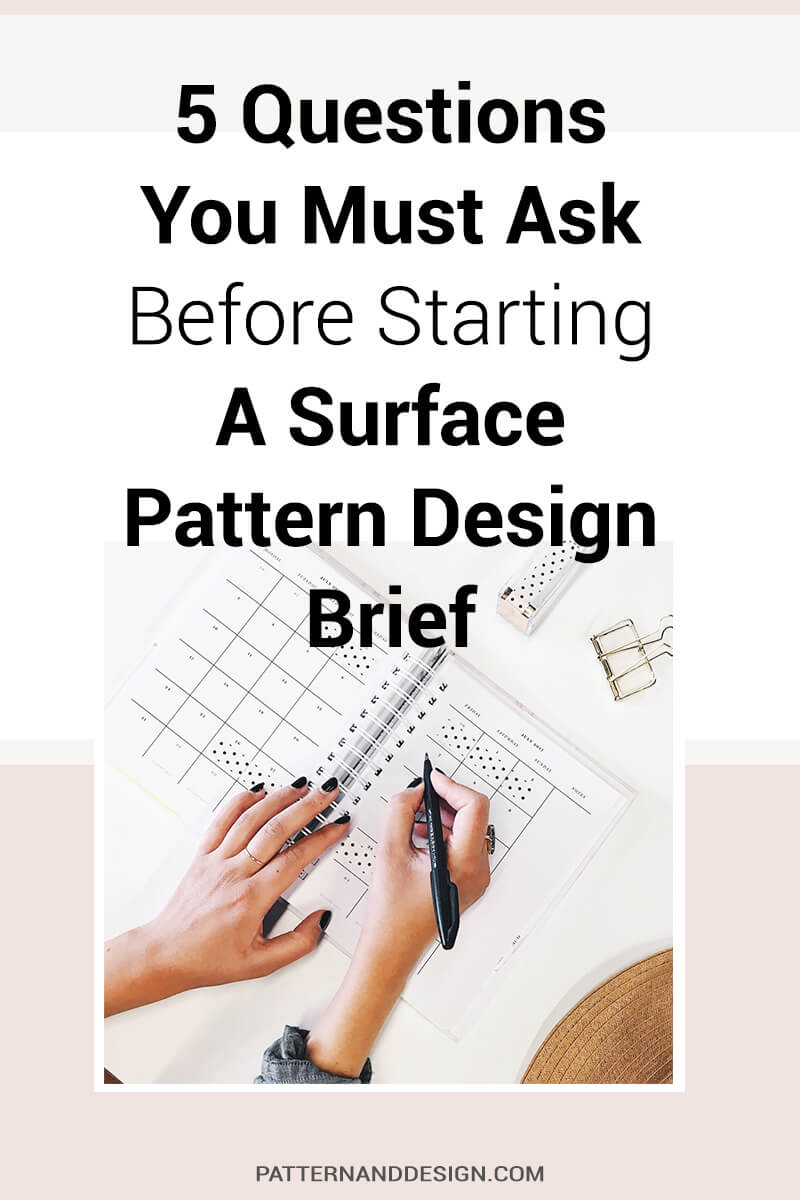learn about all things surface pattern design including the creative design process, being a successful creative entrepreneur & stepping into the mindset of a successful designer
welcome to the pattern design blog
blog
The
Categories
Popular
5 Questions You Must Ask Before Starting A Design Brief
Before you start designing it’s really important to have a very clear vision of what is required. This is especially true if you are designing for a specific client or with a specific outcome in mind. Let’s face it, who wants to waste time creating a design only to find out that you were on the wrong track from the beginning. To eliminate this happening, we’re going to take a look at 5 questions you must ask before starting a design brief.
5 Questions You Must Ask Before Starting A Design Brief
Let’s start by answering the question, ‘what is a design brief?’
A design brief is a set of instructions that designers will use as boundaries from which to work within. The detail and number of instructions will vary from brief to brief.
Now that we understand what a brief is, let’s have a look at 5 questions you must ask before starting a design brief.
1. Target Market
Knowing who your target market is imperative before you start designing.
Let’s consider a few different scenarios:
Scenario 1: You’re asked to create an apparel design for toddlers girls
Scenario 2: You’re asked to create an apparel design for women aged 45 to 60 years old
Scenario 3: You’re asked to create an apparel design for men aged 25 to 40
How is knowing this information important before you start designing?
This information will determine many factors in regards to your design including the colours and motifs you use. It could also affect the repeat size you are able to use.
Let’s take a closer look at these scenarios. For scenario 1, the toddler girls design you may be asked to create a design using butterflies and fairy motifs in a pretty pink palette but this would probably not work for the other 2 scenarios. In comparison, you may be required to use textured, graphic prints for the men’s design which may not work for the other 2 scenarios.
When considering your target market, you should also consider whether you are producing for mass market or high end. This could potentially determine your colour and theme direction.
2. Colour
You should always ask your client if they have a specific colour palette that they’d like to use. They may even have specific Pantone numbers that you will need to adhere to within your design. If you could ask them for images or colour references of colours that they would like you to use.
You also need to ask how many colours you can use within the design. There’s no point creating a gorgeous design using 8 colours only to be told that the maximum number of colours that can be used is 6. The number of colours will most often be determined by production limitations and cost so it’s important to know this information before you start designing.
To find out more about using colour within your designs, head over to my blog post here.
3. Theme/Inspiration
Without knowing the theme or inspiration for a design, you won’t know where to start. The theme will give you a strong sense of the design direction. The client should be able to let you know what sort of look they’re after e.g. a geometric design, a traditional floral design etc.
In my experience, I find that people are better at explaining their ideas visually so I always ask clients for reference images of inspirational images that could help inform the design process.
4. Repeat Size/Type
A design can be created at any size and this will completely change the look of the design e.g. a large oversized floral will look different on a dress than the same flower as a small ditzy floral. Ask your client what scale they would like the design and if they have a particular repeat type in mind.
To find out more about the different types of repeats, head over to my blog post here.
5. Deadlines
It’s important to know what your deadlines are before you start designing. This could even determine whether or not you accept the job. Make sure that the timeline is realistic and you deliver what the client requires within the time frame.
By being organised and asking the right questions at the beginning stages of designing, you will save yourself lots of time in the long run and will have a better chance of creating a successful design that sells.

Want to create another revenue stream by turning your art into surface pattern designs?
Get the free guide
Get my FREE Surface Pattern Design Starter Guide